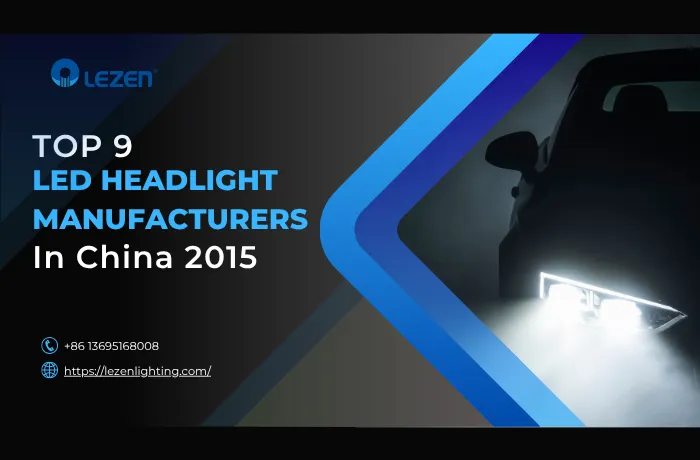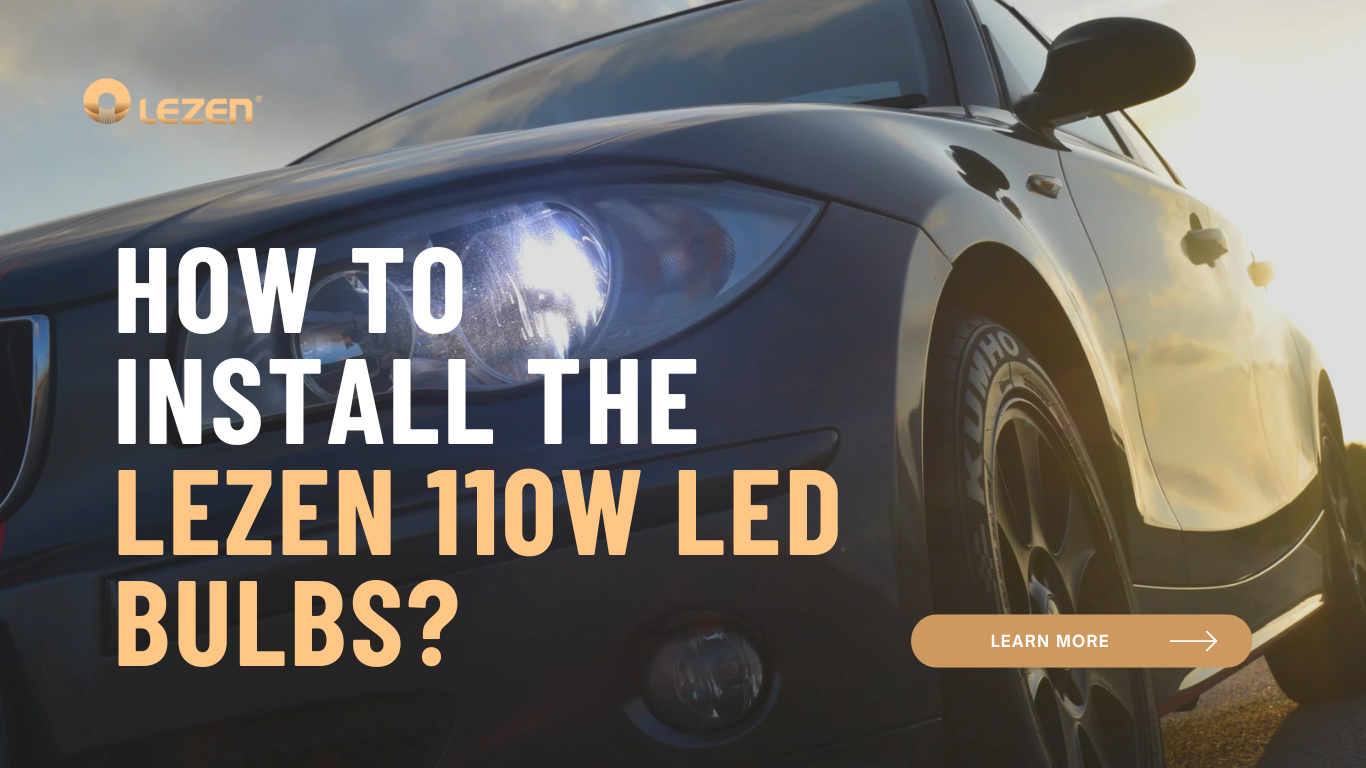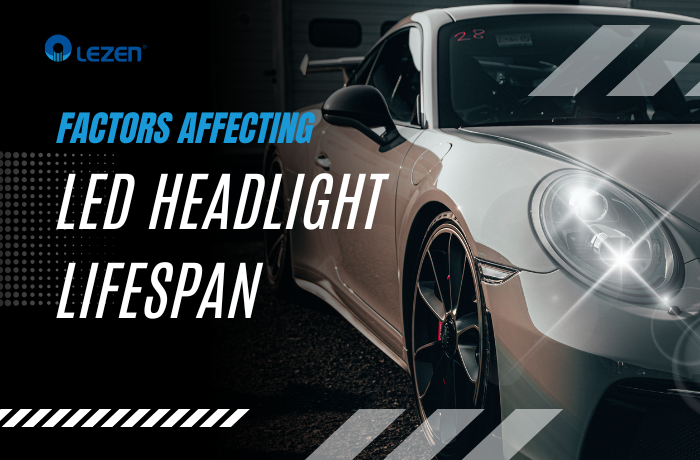Choosing the right automotive headlights is not only about illuminating the road but also directly impacts driving safety, visibility, and comfort. At LEZEN Lighting, we’ve prepared a concise guide to help you easily select the most suitable bulbs, ensuring a safer and smoother driving experience.

Key Factors to Consider When Choosing Headlights
Headlight choice is especially crucial for night driving. Poor visibility increases the risk of accidents. The right headlights can significantly improve your field of vision, allowing you to clearly see road signs, obstacles, pedestrians, and other vehicles. The right bulbs not only increase road lighting but also enhance safety in extreme weather conditions, such as rain or fog.
Choosing the wrong bulbs may result in poor visibility, even causing glare to oncoming drivers. Incorrect choices may also lead to legal issues, additional repair costs, and frequent replacements. Therefore, selecting the right headlights is crucial for every driver.
Common Mistakes in Choosing Headlights
If you choose the wrong headlights, you may encounter the following issues:
Insufficient Lighting
Dim bulbs make it difficult to see road details, especially in rainy, foggy weather, or on dark roads, compromising driving safety.
Legal Issues
Some bulbs may be too bright or their color temperature may not meet local regulations, leading to fines or legal violations.
Frequent Replacements
Low-quality bulbs have a short lifespan, requiring frequent replacements, which not only increases costs but also wastes time.
Choosing the right headlights can reduce these problems and make your driving experience safer and more convenient.
How to Choose the Right Headlight Bulb
Here’s a simple guide to help you make the best choice:
Assess Your Driving Needs
- City vs. Rural Driving: If you mostly drive in well-lit urban areas, halogen bulbs might suffice as city streets typically have sufficient streetlights. However, if you often drive on dark, rural roads, consider brighter LED or HID bulbs that provide a longer beam and ensure safer driving.
- Night Driving: If you frequently drive at night or in dimly lit areas, high-lumen bulbs significantly enhance visibility. Bulbs with a higher lumen value allow you to see more details in the dark and reduce blind spots.
Understand the Different Types of Bulbs
- Halogen Bulbs: Halogen bulbs are the most common and affordable, offering a warm light suitable for most driving conditions. However, they are not the brightest and have a shorter lifespan.
- LED Bulbs: LED bulbs offer superior energy efficiency, brightness, and lifespan compared to halogen bulbs. They provide clearer, brighter light, especially for night driving. Although LED bulbs are more expensive, their energy-saving features and longevity make them a good long-term investment.
- HID (Xenon) Bulbs: HID bulbs are very bright and offer a longer beam, making them ideal for driving on dark, unlit roads. They produce a stronger beam compared to halogen bulbs but may require adjustment to avoid blinding oncoming drivers.
Key Considerations When Choosing
When selecting headlights, consider the following important factors:
- Compatibility: Not all bulbs fit all vehicles. Different car models may have varying requirements for bulb size, shape, and socket type. Always confirm the compatibility of the bulb with your vehicle before purchasing.
- Brightness: The brightness of bulbs is measured in lumens. For most city driving, bulbs in the 700-1000 lumen range are sufficient. For rural or night driving, bulbs with 1200 lumens or more are recommended for stronger illumination.
- Color Temperature: Color temperature (measured in Kelvin, K) affects the tone of the light. Warm light (around 3000K) produces a soft glow, ideal for city streets, while cool light (5000K-6000K) simulates daylight, making it more suitable for night or long-distance driving as it offers better contrast and clearer vision.
- Energy Efficiency: LED bulbs are typically more energy-efficient than halogen and HID bulbs. They not only reduce strain on the vehicle’s electrical system but also extend the lifespan of the bulbs, reducing long-term maintenance costs.
Installation and Maintenance Tips
- Installation: Installing headlight bulbs is relatively simple for most car models. You can follow the instructions in your vehicle’s manual. However, if it’s your first time installing, it’s advisable to seek professional help to ensure the bulb is aligned correctly.
- Maintenance: Keeping your headlights clean is crucial. Regularly clean your headlights to remove dirt and dust, ensuring the light is effectively projected. Also, after installation, check the bulb alignment, as misaligned bulbs can affect visibility and may blind oncoming drivers.
FAQ
- Which type of bulb has the longest lifespan?
LED bulbs have the longest lifespan, typically lasting over 30,000 hours.
- Which is better for night driving, LED or HID bulbs?
Both LED and HID bulbs are great for night driving. LED bulbs are more energy-efficient, while HID bulbs provide a longer beam, suitable for dark roads.
- Can I replace halogen bulbs with LED bulbs directly?
Not all vehicles can directly switch from halogen to LED. Some models may require adapters or other modifications. Always check compatibility first.
- Does color temperature affect visibility?
Cool light (5000K-6000K) provides better contrast, making it especially suitable for night driving.
- Are there legal restrictions on headlight brightness?
Yes, many countries and regions have regulations regarding headlight brightness and color temperature. Be sure to check and follow local regulations before purchasing.
Choosing the right headlights is key to enhancing your night driving safety. At LEZEN Lighting, we offer a variety of high-quality bulbs to meet different needs. Whether you need LED, halogen, or HID bulbs, we can provide the ideal choice to make your driving brighter and safer.










